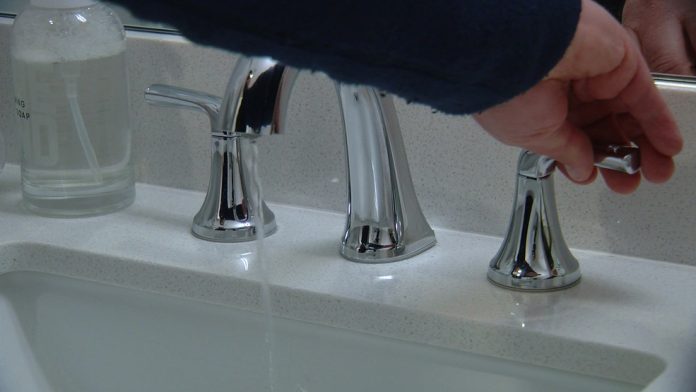AUSTIN, Texas — As Central Texas braces for below-freezing temperatures, there are a few steps you should take to protect your property’s plumbing.
CBS Austin went on a home walk-through with Mike Marugo, plumbing operations manager for ABC Home & Commercial Services. “Freeze-proof doesn’t exist. Freeze-prevention is the best we can do,” he says.
He’ll tell you to drip some faucets in different parts of your house to keep the water moving, but there’s no need to drip every fixture you have. It’s also important to drip both hot and cold.
“On a single-handle faucet, what we look for is somewhere in the middle, so we get a little bit of hot and a little bit of cold,” Marugo says.
You’ll also want to open cabinets that contain pipes along exterior walls to allow warmth to surround the pipes are risk of freezing.
Outside of the home, remember to add insulation to the box in the ground housing part of your irrigation system. Do not drip outdoor faucets or hose bibs, instead cover them.
“You push [the faucet cover] against the wall, and you make it as tight as you can. The idea is just to stop air from getting to that faucet,” Marugo adds.
ALSO| Two easy ways to protect trees during the upcoming winter storm
If you don’t have a faucet cover already, chances are you’re not going to be able to find one now, but don’t panic. Instead, wrap the exterior faucet in a towel. This will help protect it from the cold, then cover the towel with a plastic bag to keep it dry. Tie a knot or wrap tape around the bag so it’ll stay bundled together.
Lastly, it’s crucial you know how to turn the water to your home off completely.
“Your water meter is absolutely something that you hopefully won’t need but if you do, you’re going to want to know where it is and how to shut it off,” said Marugo, who then demonstrated how to properly turn the shutoff valve. “Again, you’re only going to want to do that if something actually breaks,” he added.
Frozen pipes aren’t always a major problem. In many cases, if your water stops flowing, once the weather warms up, the blockage will thaw and you’ll be just fine. However, if you do have a broken pipe causing leaks or flooding, you’ll be glad you know how to shut the water off.
“There’s not a whole lot to actually even be worried about. There are some preventative measures– cover your hose bibs, cover your outside backflow devices, make sure you’re running water in different points of the home, open cabinets on outside walls— little stuff that we can do to keep things flowing along,” Marugo advises.
If you do have a broken pipe, flood, or plumbing problem that otherwise empties your water heater, you will want to make sure to turn off the water heater to prevent damage to the appliance while it’s empty.
NOTE: ABC Home & Commercial Services is a CBS Austin advertiser.
cbsaustin.com
https://cbsaustin.com/news/local/freeze-prevention-tips-to-protect-your-homes-plumbing















